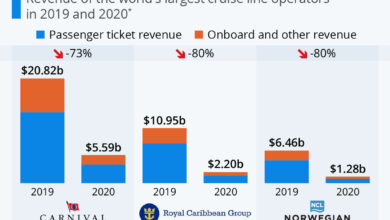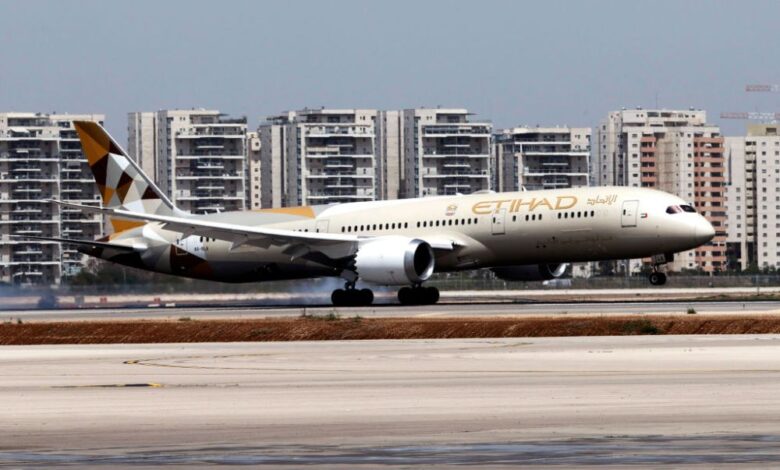
Airlines Adding More Ultralong Haul Flights A Look Ahead
Airlines adding more ultralong haul flights is a significant trend shaping the future of air travel. This expansion reflects growing demand for these extended journeys, driven by factors like economic recovery and a surge in international tourism. We’ll explore the key drivers, competitive strategies, passenger preferences, operational challenges, and the projected future of this fascinating segment of the aviation industry.
The increase in ultralong haul flights is a response to evolving passenger needs and market trends. Airlines are recognizing a desire for unique and luxurious experiences, which translates to new route development and enhanced amenities.
Market Trends and Factors Driving Growth
The global air travel market is experiencing a significant resurgence, particularly in the long-haul sector. Post-pandemic recovery, coupled with pent-up demand and evolving travel preferences, is driving a surge in passenger numbers and a renewed focus on luxurious, long-distance journeys. Airlines are responding to this shift by strategically expanding their ultralong-haul fleets and routes, recognizing the substantial profit potential.This expansion isn’t simply a knee-jerk reaction; it’s a calculated move rooted in a confluence of economic factors and a proactive adaptation to technological advancements.
Airlines are meticulously analyzing market data, considering economic forecasts, and assessing the feasibility of these ambitious routes. Understanding the drivers behind this trend is crucial for comprehending the future trajectory of the airline industry.
Global Air Travel Market Trends
The global air travel market demonstrates a robust recovery following the pandemic’s disruption. Passenger numbers are steadily increasing, particularly for long-haul flights, reflecting a renewed desire for international travel and exploration. Demand for premium cabin classes, a key indicator of the market’s strength, is also rising, demonstrating a preference for comfort and enhanced amenities on longer journeys. This renewed demand, coupled with a rising global middle class, is fueling the growth of the ultralong-haul sector.
Key Economic Factors Influencing Ultralong-Haul Expansion
Several economic factors are influencing airlines’ decisions to invest in ultralong-haul routes. These include economic recovery, increased disposable income among affluent travelers, and burgeoning tourism in specific destinations. The growing demand for luxury travel and experiences is another compelling factor. Economic stability and prosperity in major global economies often correlate with increased spending on luxury travel and long-haul flights, highlighting a clear link between economic performance and air travel demand.
Specific Events Impacting Long-Haul Travel
The economic recovery following the pandemic has been a significant driver of increased demand for long-haul travel. The reopening of borders and the lifting of travel restrictions across the globe have led to a surge in international tourism. This event has spurred a renewed interest in long-haul travel, encouraging airlines to expand their ultralong-haul routes. Furthermore, a surge in tourism in specific destinations, such as the Far East or South America, has created a need for faster, more efficient transport links.
Growth Comparison with Other Airline Segments
The growth of ultralong-haul routes contrasts with some other segments of the airline industry. While overall air travel is recovering, the expansion of ultralong-haul routes often outpaces the growth of shorter-haul routes or regional flights. This reflects the unique market dynamics and demand drivers associated with longer journeys. Airlines are capitalizing on the demand for luxurious, efficient, and comfortable long-haul travel.
Impact of Technological Advancements
Technological advancements have significantly influenced the feasibility of ultralong-haul flights. Aircraft design improvements, including greater fuel efficiency and larger passenger capacities, are key to the economic viability of these routes. Furthermore, advancements in cabin technology, offering enhanced in-flight entertainment and connectivity, have enhanced the passenger experience, making long-haul flights more appealing. This technological progress is crucial for airlines to maintain competitiveness and meet evolving passenger expectations on these extended journeys.
Competitive Landscape and Strategic Alliances: Airlines Adding More Ultralong Haul Flights
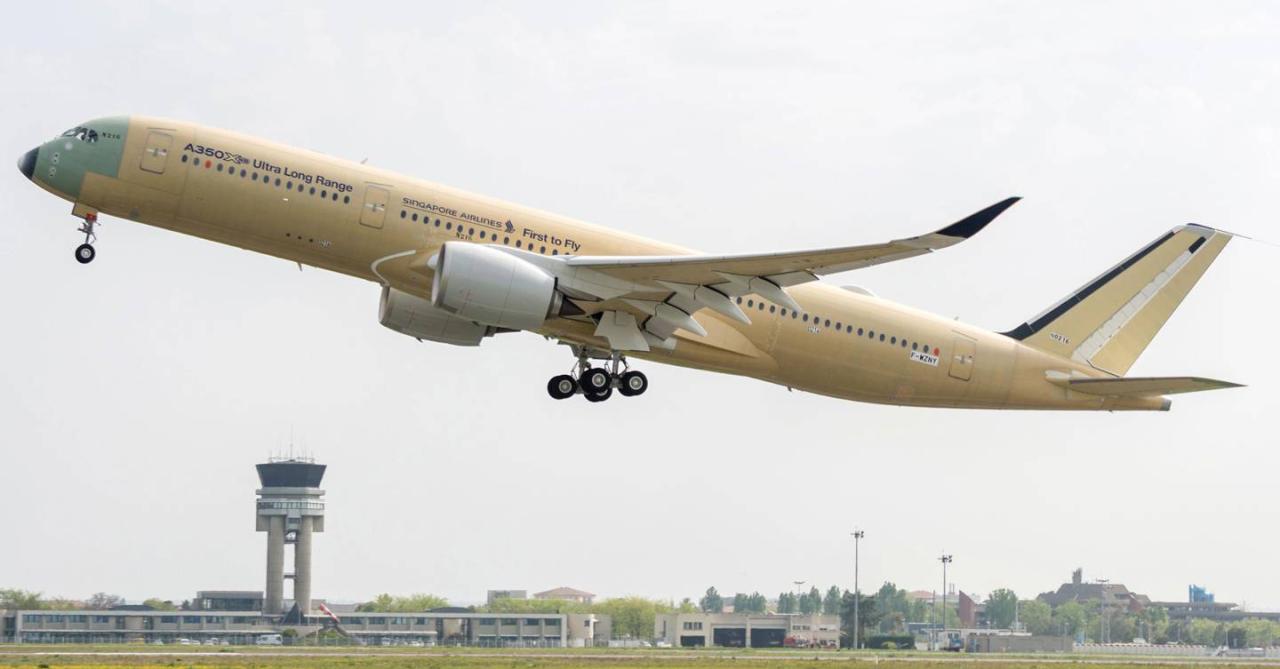
The ultralong-haul aviation sector is experiencing a surge in activity, driven by increasing demand for luxurious travel experiences and the desire for seamless global connectivity. This burgeoning market is attracting significant investment and strategic maneuvering from established and emerging airlines alike. Understanding the competitive landscape and the alliances forming is crucial for appreciating the dynamics of this evolving industry.The current competitive landscape is characterized by a mix of established giants and ambitious newcomers vying for market share.
Established carriers are leveraging their existing infrastructure and brand recognition, while newer entrants are focused on innovative approaches to attract passengers and differentiate themselves.
Major Airlines Operating or Planning Ultralong-haul Flights
Several airlines are actively engaged in or have plans for expanding their ultralong-haul operations. This includes not only traditional global carriers but also airlines targeting specific niche markets. Emirates, Qatar Airways, and Singapore Airlines are prominent examples, with extensive networks and a history of operating long-haul routes. Other airlines, like Korean Air and EVA Air, are expanding their reach to encompass longer routes, indicating a wider industry-wide shift.
Competitive Strategies Employed by Airlines
Airlines employ diverse strategies to attract passengers in the competitive ultralong-haul market. These strategies often revolve around offering enhanced passenger amenities, premium cabin experiences, and a wider range of destinations. For instance, airlines may emphasize the use of cutting-edge aircraft technologies to maximize passenger comfort and minimize travel time. Sophisticated marketing campaigns highlighting these features are crucial to attracting customers.
Furthermore, competitive pricing models and attractive loyalty programs are key components of attracting and retaining passengers.
Airlines are really stepping up their game with more ultralong haul flights, opening up exciting new destinations. This means longer trips, but also means more time to enjoy activities like those amped up on Avalon ship! Activities amped up on Avalon ship offer a fantastic way to spend those extra hours on the water, and these longer flights are making that possible for more people.
It’s definitely an exciting time for global travel!
Marketing Strategies and Pricing Models
The marketing strategies employed by different airlines vary significantly. Some airlines focus on luxury and exclusivity, while others target a broader customer base with a more accessible pricing model. The marketing campaigns highlight the specific features of the ultralong-haul experience, whether it’s the unparalleled comfort of a premium cabin or the ability to connect to remote destinations. Pricing models vary from fixed fares to dynamic pricing strategies, which adjust based on demand and market fluctuations.
Strategic Alliances and Their Impact, Airlines adding more ultralong haul flights
Strategic alliances between airlines play a crucial role in expanding ultralong-haul routes. These partnerships allow airlines to share resources, code-share flights, and access wider networks, thereby enabling them to reach previously inaccessible destinations. This collaborative approach allows airlines to leverage each other’s expertise and infrastructure, potentially creating a synergistic effect on route development and expansion. Examples include the partnership between airlines like United and Lufthansa, allowing access to a wider range of routes and destinations.
Comparison of Competing Airlines in the Ultralong-haul Sector
| Airline | Aircraft Type | Range (nm) | Key Destinations |
|---|---|---|---|
| Emirates | Boeing 777-300ER, Airbus A380 | >8,000 | New York, London, Dubai, Sydney |
| Qatar Airways | Boeing 787-10, Airbus A350-1000 | >8,000 | Doha, London, New York, Tokyo |
| Singapore Airlines | Boeing 777-300ER, Airbus A350-900 | >8,000 | Singapore, London, New York, Sydney |
| Korean Air | Boeing 787-10 | >7,000 | Seoul, New York, Los Angeles, London |
| EVA Air | Boeing 787-9 | >7,000 | Taipei, Los Angeles, San Francisco, Tokyo |
Note: Figures are approximate and may vary depending on specific aircraft configuration and route conditions.
Airlines are really pushing the boundaries with more ultralong haul flights, offering incredible travel options. This is great for connecting the world, but it also highlights the incredible artistry of places like Hawaii, as seen in the academy kicks off 58th artists of hawaii exhibit. Hopefully, this increased accessibility will inspire more people to experience the unique culture and beauty of destinations like Hawaii, which will continue to inspire the amazing designs and art that airlines use in their branding and flight experiences.
Passenger Preferences and Demands
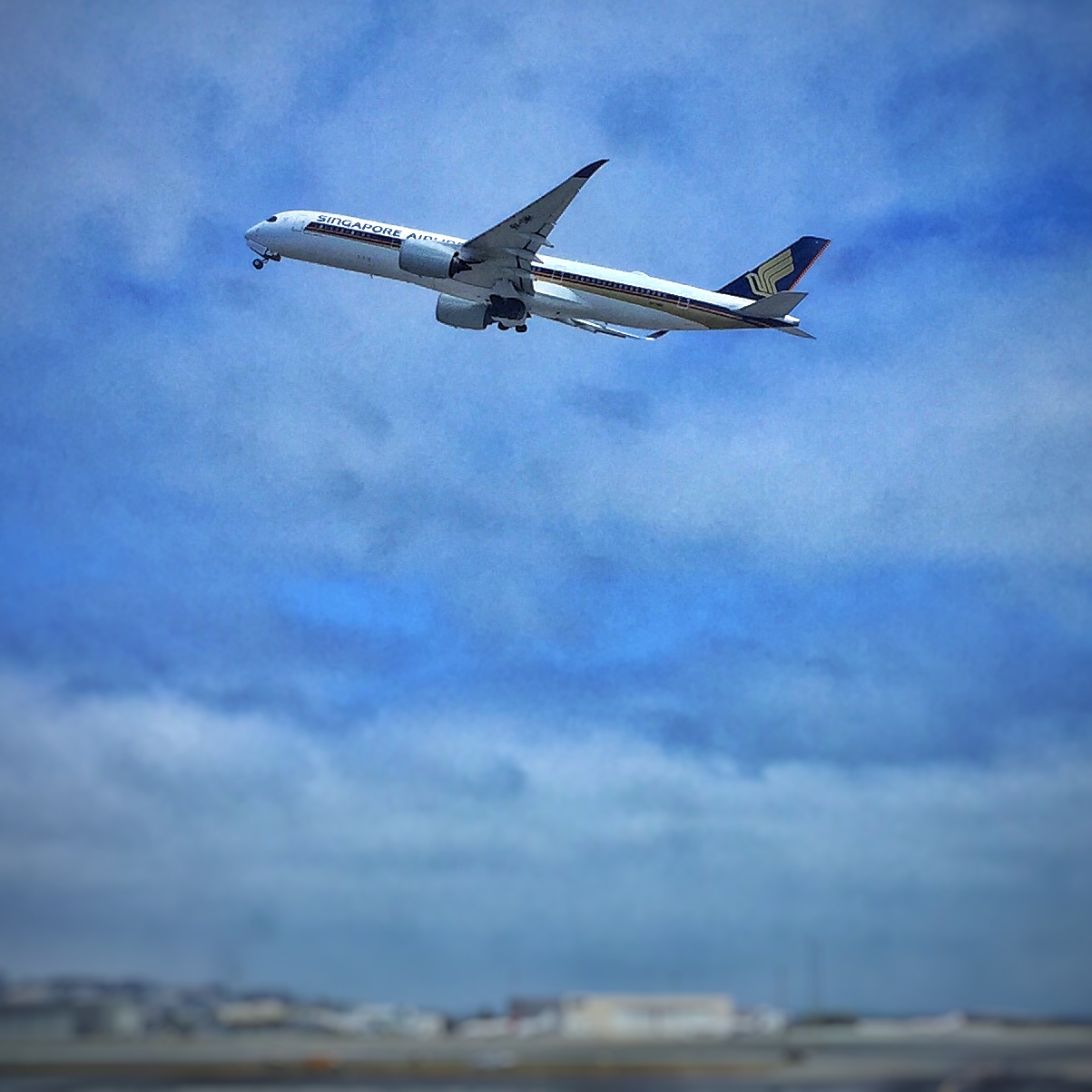
The demand for ultralong-haul flights is rapidly increasing, driven by a desire for unique travel experiences and access to destinations previously considered out of reach. Understanding the preferences of these discerning travelers is crucial for airlines aiming to capture this lucrative market segment. This analysis delves into the profiles, motivations, and expectations of passengers seeking these extended journeys.Passengers on ultralong-haul flights often represent a high-income demographic with a strong interest in experiencing diverse cultures and exotic locations.
They are typically willing to invest in premium travel experiences, valuing comfort, and exceptional service above all else. This demographic frequently seeks out unique travel experiences beyond the standard tourist itineraries, demonstrating a desire for personalized attention and bespoke travel arrangements.
Passenger Profile
Ultralong-haul travelers generally exhibit specific characteristics. They are frequently high-net-worth individuals or affluent business travelers with substantial disposable income. Age ranges can vary, but there’s a noticeable presence of both younger professionals and mature individuals seeking adventurous journeys or reconnecting with heritage destinations. Travel preferences often involve a mix of leisure and business travel, with an emphasis on relaxation and exploration.
Factors Influencing Destination Choice
Several factors play a crucial role in the choice of ultralong-haul destinations. These include the cultural richness of the destination, its unique offerings, and the opportunity for personalized experiences. For example, destinations with historical significance, natural wonders, or vibrant culinary scenes are frequently chosen. Additionally, the availability of bespoke tours and curated experiences often influences passenger selection.
Amenities and Services Attracting Passengers
Passengers on ultralong-haul flights often value premium amenities and exceptional service. Examples include spacious seating configurations, personalized in-flight entertainment systems, high-quality dining options, and access to dedicated lounges and concierge services. The availability of premium cabin classes, with enhanced comfort and luxury, is another key element attracting this demographic. A personalized touch, like pre-arranged accommodations and local transportation, can significantly elevate the passenger experience.
Passenger Survey on Ultralong-haul Flight Preferences
A comprehensive passenger survey on ultralong-haul flight preferences should include specific questions designed to capture detailed information. A sample survey structure could include:
- Travel Frequency and Motivation: Questions to assess the frequency of long-haul travel, motivation for selecting ultralong-haul destinations (e.g., business, leisure, cultural exploration), and preferred travel companions.
- Destination Preferences: Specific questions regarding preferred destinations, travel styles, and desired experiences (e.g., historical sites, natural landscapes, cultural immersion).
- Amenities and Services: Questions regarding preferred amenities and services, including cabin class preferences, in-flight entertainment, dining options, and lounge access.
- Pricing and Value Perception: Questions concerning price sensitivity, willingness to pay for premium experiences, and factors influencing perceived value.
- Overall Satisfaction and Recommendations: Open-ended questions to gauge overall satisfaction with the flight experience and gather suggestions for improvement.
Impact of Luxury and Premium Experiences
Luxury and premium experiences are vital factors in the choice of ultralong-haul flights. Passengers are willing to pay a premium for superior comfort, personalized service, and unique experiences that enhance the overall journey. This translates to a focus on personalized in-flight services, premium dining options, and access to exclusive amenities. Examples include private suites, curated in-flight experiences, and specialized catering.
The high-value traveler frequently prioritizes a unique experience that stands apart from conventional travel.
Infrastructure and Operational Considerations
Ultralong-haul flights present unique challenges that go beyond the simple extension of existing routes. The sheer distance, coupled with the extended flight times, necessitates a meticulous approach to infrastructure, operations, and maintenance. These factors are critical to ensuring both passenger comfort and operational safety and efficiency.Modern aviation faces a crucial balancing act: pushing the boundaries of travel distance while maintaining safety, reliability, and affordability.
Airlines are really ramping up those ultralong haul flights, which is fascinating. This increased capacity naturally needs a robust marketing push, and that’s where the pioneer online travel agencies (OTAs) come into play. They’ve been instrumental in advertising these routes to a wider audience, making the booking process smoother and more accessible. The strategic advertising by these early OTAs has played a key role in shaping the demand for these flights, ultimately fueling the growth of the ultralong haul travel sector.
advertising and the pioneer otas This, in turn, encourages even more airlines to add these routes, creating a virtuous cycle.
This requires a comprehensive understanding of the specific challenges associated with ultralong-haul operations and proactive solutions for each.
Fuel Efficiency
Ultralong-haul flights demand aircraft with exceptional fuel efficiency. Aerodynamic designs, advanced engine technologies, and optimized flight paths are essential. For example, Boeing’s 787 Dreamliner, with its lightweight composite structure and advanced engines, has demonstrated a significant improvement in fuel efficiency compared to older models, leading to cost savings for airlines. The ongoing development of sustainable aviation fuels (SAFs) also plays a crucial role in reducing the environmental impact of these extended flights.
Airlines need to carefully consider the economic viability and environmental benefits of using SAFs in their long-term strategic planning.
Aircraft Maintenance
The extended flight times of ultralong-haul flights significantly increase the workload on aircraft maintenance teams. Advanced diagnostic tools and predictive maintenance systems are essential to minimize downtime and ensure the safety of passengers and crew. Regular and meticulous inspections, particularly during extended periods, are vital for identifying and addressing potential issues before they escalate. Airlines must invest in highly skilled technicians and robust maintenance procedures to support the added complexity of these flights.
Crew Scheduling
Managing crew scheduling for ultralong-haul flights is a complex logistical puzzle. Airlines must consider factors such as fatigue management, rest requirements, and crew welfare to ensure safety and maintain operational standards. Advanced scheduling software and crew rest management protocols are vital. The need for well-rested and motivated crews is paramount, especially on flights that may last for 20 hours or more.
For example, some airlines utilize advanced algorithms and crew rotation models to optimize schedules and minimize fatigue.
Airport Infrastructure
The infrastructure at airports plays a critical role in supporting ultralong-haul flights. Advanced facilities, including larger gates, dedicated crew rest areas, and specialized maintenance hangars, are essential. This also includes enhanced security protocols and immigration facilities to handle the increased passenger volume and longer transit times. The ability to provide smooth transitions for passengers and crew is paramount to a successful ultralong-haul operation.
Aircraft Certification and Maintenance
Aircraft certification for ultralong-haul flights requires rigorous testing and validation. The aircraft must meet stringent safety standards, including those for structural integrity, engine performance, and navigation systems. Maintenance procedures must be specifically designed to handle the increased flight hours and operational demands. Compliance with regulatory bodies like the FAA (Federal Aviation Administration) or EASA (European Aviation Safety Agency) is essential.
Efficient Supply Chains
Effective supply chains are crucial for ensuring smooth operations of ultralong-haul flights. Efficient management of fuel supplies, catering, and other logistical requirements is paramount to minimizing delays and maximizing efficiency. The ability to provide seamless service to passengers throughout the entire journey is critical. Airlines need to consider the entire supply chain to ensure smooth operation.
Airlines are really pushing the boundaries with these new ultralong haul flights, offering incredible opportunities for globetrotting. However, the recent news about the Air Jamaica CEO’s resignation, which sparked protests ( air jamaica ceo resignation prompts protest ), raises questions about the future of the industry. Hopefully, this won’t significantly impact the exciting expansion of ultralong haul routes we’re seeing globally.
Key Infrastructure Requirements
| Type of Infrastructure | Function | Required Standards |
|---|---|---|
| Airport Facilities | Passenger handling, crew rest, aircraft maintenance | Larger gates, dedicated crew rest areas, enhanced security, and immigration facilities, specialized maintenance hangars |
| Aircraft Specifications | Fuel efficiency, range, and passenger capacity | Advanced engine technologies, aerodynamic designs, composite structures, and enhanced cabin pressurization systems |
| Maintenance Facilities | Aircraft inspection and repairs | Advanced diagnostic tools, predictive maintenance systems, and skilled technicians |
| Supply Chain Management | Fuel, catering, and logistical requirements | Efficient management of resources, minimizing delays, and maximizing efficiency |
Future Outlook and Predictions
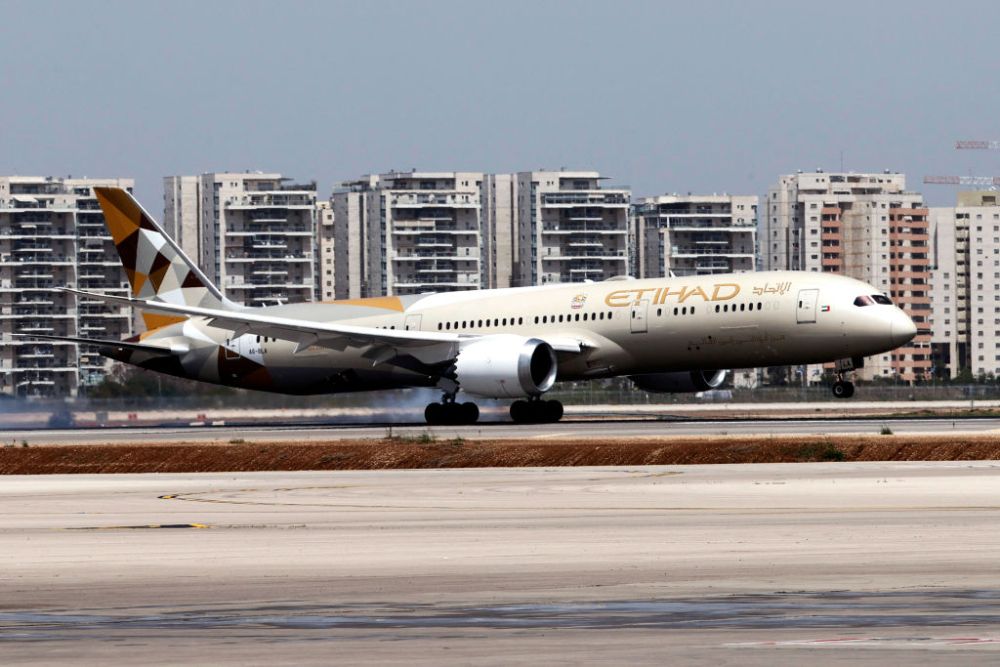
The future of ultralong-haul flights promises exciting possibilities, but also presents significant challenges. As airlines invest in this niche market, understanding the potential growth, disruptive forces, and technological advancements is crucial for long-term success. The increasing demand for connecting globally dispersed destinations, combined with evolving passenger preferences, suggests a promising trajectory. However, factors like infrastructure limitations and environmental concerns must be addressed for sustainable growth.
Potential Growth of Ultralong-Haul Flights
The expansion of ultralong-haul routes is anticipated to be driven by a confluence of factors, including rising global tourism, increasing demand for exclusive travel experiences, and the need for seamless connectivity between major hubs. Airlines targeting this market segment will likely focus on premium services, such as luxurious seating arrangements, gourmet meals, and personalized in-flight entertainment, to cater to discerning travelers.
The growth of this sector is expected to be particularly pronounced in regions experiencing economic prosperity and expanding travel infrastructure. Examples include routes connecting major cities in Asia with North America and South America, potentially experiencing substantial growth in passenger volume in the next decade.
Potential Disruptions and Challenges
Several factors could disrupt the expansion of ultralong-haul routes. Rising fuel costs, geopolitical instability, and environmental regulations are potential challenges. Increased scrutiny on carbon emissions and the growing pressure for sustainable aviation practices could impact route viability. The development of alternative transportation modes, like high-speed rail networks or space travel, might also influence the future demand for ultralong-haul flights.
For instance, if a high-speed rail line is built between major European cities, it could potentially reduce the demand for long-haul flights between these cities.
Innovative Technologies Revolutionizing Ultralong-Haul Travel
Technological advancements hold significant potential to enhance the ultralong-haul travel experience and improve operational efficiency. Improvements in aircraft design, such as advancements in lightweight materials and aerodynamic features, can improve fuel efficiency. The incorporation of advanced cabin technologies, including personalized entertainment systems and improved cabin pressure control, can create a more comfortable and enjoyable travel experience for passengers.
Airlines are really ramping up those ultralong haul flights, which is pretty cool. This massive expansion likely needs some serious architectural planning, especially when considering the massive structures required for these flights. That’s where the largest architectural firms 2 come into play largest architectural firms 2 , designing the cutting-edge facilities and infrastructure to support these epic journeys.
All of this points to a fascinating future in global travel.
Moreover, advancements in aircraft automation and navigation systems can reduce pilot workload and increase safety. Examples include the development of quieter engines and improved air traffic control systems.
Long-Term Sustainability of Ultralong-Haul Flights
The long-term sustainability of ultralong-haul flights hinges on the adoption of sustainable practices and the development of new technologies. Airlines will need to adopt eco-friendly fuel sources and optimize flight routes to minimize fuel consumption. Moreover, a shift towards more sustainable aircraft designs and manufacturing processes is crucial. Airlines should also actively participate in research and development of innovative technologies, such as biofuels and electric propulsion systems.
Projected Ultralong-Haul Flight Routes and Passenger Volume
| Route | Projected Passenger Volume (2024-2034) | Projected Growth Rate (%) |
|---|---|---|
| London-Sydney | 150,000-200,000 | 10-15% |
| New York-Tokyo | 180,000-250,000 | 12-18% |
| Los Angeles-Dubai | 120,000-180,000 | 8-12% |
Note: These figures are estimates and may vary based on various economic and market factors.
The graphic illustration below displays projected ultralong-haul flight routes and passenger volume over the next 10 years. The routes are color-coded, with darker shades indicating higher projected passenger volume. The graph also shows the projected growth rate for each route, highlighting the potential for substantial increases in demand for ultralong-haul travel.
Concluding Remarks
In conclusion, the rise of ultralong haul flights signifies a dynamic shift in the aviation industry. Driven by market forces, passenger preferences, and technological advancements, this segment promises exciting developments in the years ahead. The competitive landscape, operational challenges, and infrastructure considerations will all play a crucial role in shaping the success of these ambitious routes.
Essential Questionnaire
What are the primary economic factors driving this expansion?
Economic recovery, increased disposable incomes, and a surge in international tourism are major contributors. The rise in global trade and business travel also plays a role.
What are some of the challenges associated with operating ultralong haul flights?
Challenges include fuel efficiency, aircraft maintenance, crew scheduling, and the need for specialized airport infrastructure. These factors significantly influence the feasibility and cost-effectiveness of ultralong haul routes.
How do passenger preferences impact the development of ultralong haul routes?
Passengers seeking ultralong haul flights often prioritize luxury amenities, premium experiences, and unique destinations. Airlines adapt their services to meet these demands, offering factors like spacious seating, gourmet meals, and entertainment options.
What innovative technologies could revolutionize ultralong haul travel?
Advancements in aircraft design, improved fuel efficiency, and innovative cabin technology are key. These advancements contribute to the feasibility and sustainability of these routes in the future.




